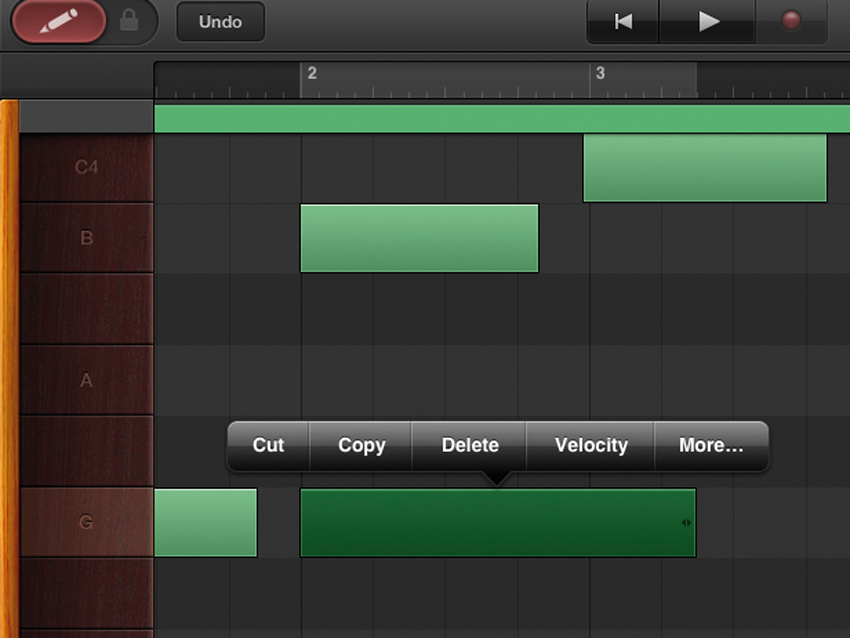

The harder you play, the louder the piano sound, for example.Ĭonnect a MIDI synthesizer. It draws its power directly from your USB jack, so you don’t need a power adapter, and it’s velocity-sensitive, which means that its keys are touch-sensitive. If you can live with 49 keys, it’s a very nice keyboard.
#Garageband midi guitar chords mac
It makes music only when it’s plugged into, for example, a Mac running GarageBand.Īpple sells (or, rather, resells) a MIDI controller for $100 called the M-Audio Keystation 49e.

That’s the point of a MIDI controller it looks and feels like a synthesizer keyboard, but produces no sounds of its own. All you really need is one that can trigger them. It’s an electronic language that lets musical equipment and computers communicate over a cable.īecause your Mac is perfectly capable of playing any of hundreds of musical-instrument sounds (like the ones built into GarageBand), you don’t really need an electronic keyboard that can produce sounds. MIDI (pronounced “middy”), you may recall from Chapter 1, stands for musical instrument digital interface. Still, at least you can play chords this way, and you can use your fingers instead of the mouse.Ĭonnect a MIDI controller. You don’t get much expressive capability, since pressing the letter keys harder or softer doesn’t produce any difference in sound.

A great new feature of GarageBand 2 turns your regular typing keyboard into a musical keyboard. Unfortunately, it’s very clunky it’s like playing a piano with a bar of soap.īut it’s free, it’s built-in, and it’s handy for inputting the occasional slow solo line or very brief musical part. Until Apple invents a 10-button mouse, however, this onscreen keyboard limits you to playing only one note at a time. That is, click the keys of GarageBand’s own, built-in, onscreen piano keyboard. If your rhythm wasn’t perfect, so what? No human being’s rhythm is perfect (at least compared to a computer’s), not even that of rock star millionaires. If you played a wrong note, no biggie-just drag it onto a different pitch, or delete it altogether. If you made it through Chapter 1, you now know that these regions contain MIDI information (that is, note data that you can edit). Other people ignore the loops altogether and play all of the parts themselves, one instrument at a time, using GarageBand as a multitrack “tape recorder.”Īnything you record like this shows up in green GarageBand regions. For example, some people use GarageBand’s loops to create a rhythm section-a backup band-and then they record a new solo on top. Either way, the cool part is that you can combine your own performances with GarageBand’s other tools.

To generate the notes that GarageBand records, you can play either an external musical keyboard or an onscreen one. It can record your live keyboard performances, whether you’re a painstaking, one-note-at-a-time plunker or a veteran of Carnegie Hall. If you have some semblance of musical chops, though, GarageBand can quickly take you to the next level of creativity. As you know from the previous chapters, GarageBand’s loops can provide hours of fun and profit even if you don’t have a lick of musical training.


 0 kommentar(er)
0 kommentar(er)
